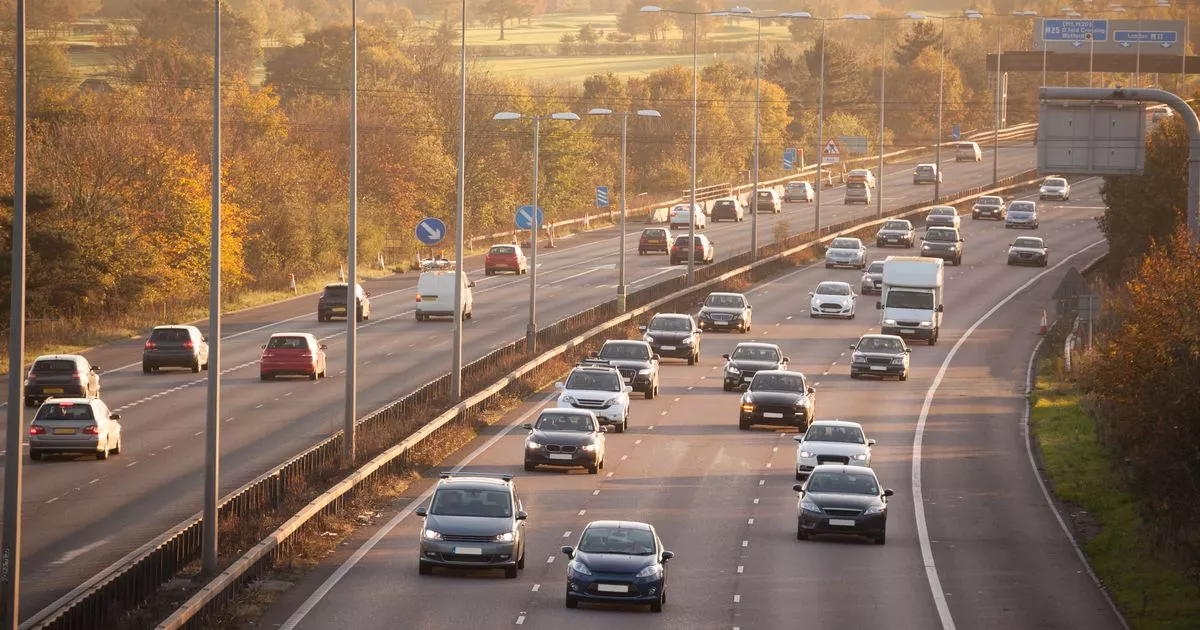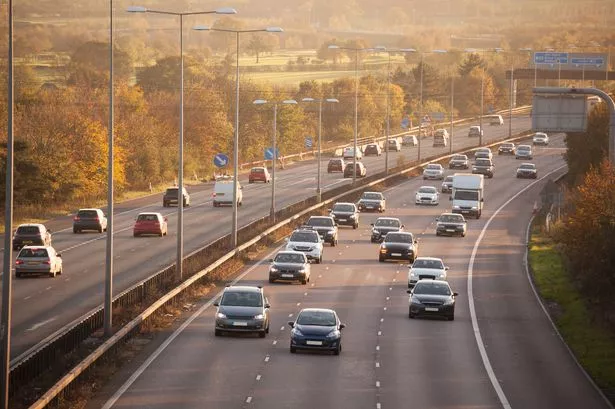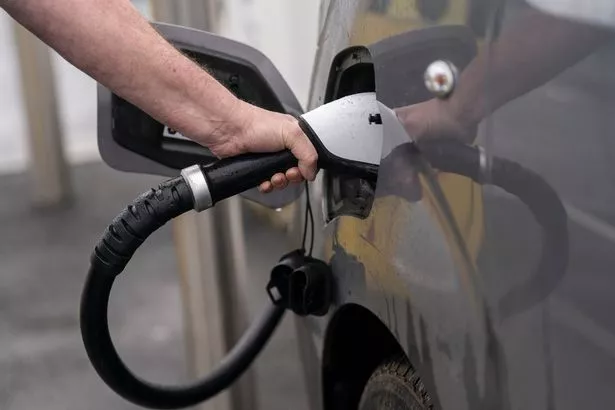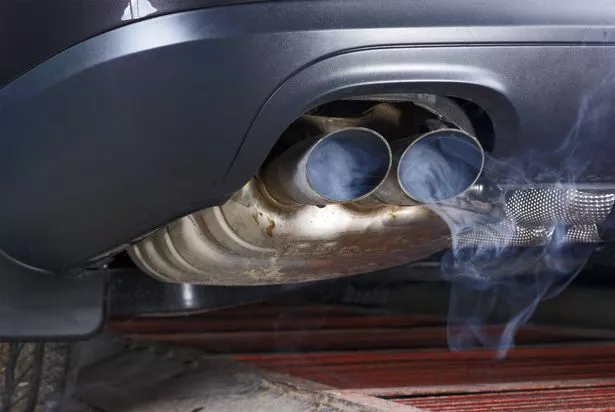13 key dates for drivers in 2025 including massive tax increase and mandatory sight tests




There are a number of new rules and regulations that are set to come into force in 2025 – including vehicle excise duty (VED) changes which could see costs of motoring soar
A series of significant changes are set to roll out over the next year and beyond, which could have a substantial impact on UK drivers – potentially hitting their wallets hard. Some of the most notable changes will be in vehicle excise duty (VED), where electric cars will begin to be taxed for the first time.
Additionally, highly polluting vehicles will see their tax increase by £2,745 – with an average rise of £418. The DVSA has been exploring changes to the sight test process for those over 70 for two years now, and a report is expected soon – this could result in mandatory sight tests before individuals can renew their licences at that age.
With new ‘live’ petrol pump prices available, the end of congestion charge exemptions, and various law changes for goods vehicle drivers, it’s shaping up to be a busy year for drivers and fleet managers. Here’s our summary of what’s on the horizon for 2025:
READ MORE: Full list of 59 cars to face £2,745 car tax hike next year – including Ford and ToyotaREAD MORE: Car insurance increasingly unaffordable for ‘shocking number of people’ as millions priced out
1. Electric vehicle road tax April 2025
Electric vehicles to start paying vehicle excise duty from April 2025 onwards. From 1 April 2025, all electric vehicles will be subject to a higher band vehicle excise duty (commonly referred to as ‘car tax’) set by the government. The standard rates currently stand at £190/year for cars, £335/year for vans and £25/year for motorcycles and tricycles.
Electric vehicles registered after April 1, 2025, will be subject to a first-year rate of £10, a significant increase from the £0 paid in the financial year 2024-25. Additionally, these cars will no longer be exempt from the Expensive Car Supplement, which applies to cars with a list price over £40,000.The current charge for this supplement is £410 in 2024/25. Furthermore, diesel and petrol cars emitting more than 76g/km of CO2 will see their first-year tax double in 2025/26 compared to 2024/25.
2. Vehicle tax rise April 2025
Vehicle excise duty (VED) has been increasing with inflation since 2010, with changes for the next financial year announced in the Autumn Budget 2024. From April 2025, the first-year VED fees for petrol and diesel models will see a substantial rise.
These hefty fees are paid by owners of brand-new vehicles before they switch to the standard rate. The fees will increase on a sliding scale, with most of the higher tiers seeing their fees double from their current 2024 rates.
Models producing over 255 g/km of CO2 will face the highest increase of £2,745, affecting some of the most popular vehicles on the road.
A staggering 59 cars from 24 brands, including popular manufacturers such as Ford, BMW and Mercedes, are set to face a £2,745 car tax increase in April 2025. The Treasury has informed Car Dealer Magazine that from April 2025, the cost of a new Ford Puma’s first-year VED will jump from £220 to £440, while a Range Rover owner could see a rise from £2,745 to a jaw-dropping £5,490.
These changes, expected to generate an additional £162.9 million in tax revenue in the first half of 2025, could see drivers paying an average of £418 more for new vehicles.
3. Sight tests – 2025
The DVSA had pledged to investigate sight testing in its 2024 action plan – but so far we have heard nothing from them on this. Concerns have been escalating about elderly drivers on the roads whose vision may have deteriorated. A new rule could see three million lose their licence if motoring chiefs at the Driver and Vehicle Standards Agency (DVSA) accept the demands of optometrists and families of victims.
The Association of optometrists is calling for the law to be changed so that all drivers have their vision checked when they first apply for a driving license when renewing it and checks every three years for those over seventy.
Six out of 10 optometrists have reported seeing a patient in the past month who continues to drive despite their vision being below the legal standard. The Association of Optometrists is urging for a change in law, requiring all drivers to have their vision checked when they first apply for a driving licence, upon renewal, and every three years for those over 70.
Professor Julie-Anne Little, former chair of the AOP, stated: “Sight changes are gradual which means that many drivers are unaware that their vision has deteriorated over time. Having poor eyesight has been shown to slow reaction times and the ability to drive safely.”
READ MORE: Residents of street where houses sell for £700k fuming as Hollywood stars take over street
“It doesn’t take much for one mistake to result in a serious collision with catastrophic consequences,” added Mr Sampson, “The number plate test is not an adequate test of vision. The law should be updated to ensure all drivers are required to have their vision checked and this should be done by reliable means.”
It’s expected that the DVSA report will be published in 2025, potentially recommending mandatory sight checks for people over 70 before their licence renewal can proceed.
4: Fuel Duty freeze – now
In other news, it was revealed in the same budget that the fuel duty freeze will continue into 2025/26. The government confirmed that fuel duty will remain frozen until March 2026 to help alleviate the cost-of-living crisis.
Since January 2011, the duty on fuel has been frozen to prevent it from rising with inflation. The standard rate for diesel and petrol remains at 52.95 pence per litre (ppl), as reported by the Office for Budget Responsibility, which includes a 5 ppl reduction.
5. Fuel finder scheme – late 2025
The forthcoming Fuel Finder scheme, formerly known as Pumpwatch, is set to enhance transparency around road fuel prices. Under this initiative, all UK retail petrol stations will be obliged to report any changes in price and fuel shortages within half an hour, ensuring that drivers across the UK receive a fair deal for fuel.
READ MORE: Eight popular car models set to be slapped with £600 tax in 2025
6. Tachographs rules Dec 24/Aug 24
Commercial vehicles are mandated to adhere to tachograph rules. Tachographs are installed in certain commercial vehicles with a maximum authorised mass exceeding 3.5 tonnes.
They record data such as driving time, vehicle speed and mileage. The use of a tachograph ensures that all drivers comply with road rules and promotes driver wellbeing.
According to Regulation (EU) 2020/1054, a ‘full’ smart tachograph 2 or ‘transitional’ smart tachograph 2 must be retrofitted into applicable vehicles with either an analogue or digital tachograph undertaking international journeys from 31 December 2024 onwards, or a smart tachograph 1 undertaking international journeys from 19 August 2025 onwards.
The updated tachograph will now have the capability to log when the vehicle crosses borders, when it’s being loaded and unloaded, and will feature enhanced anti-tampering mechanisms.
7. Congestion charge exemption ends – Dec 2025
From 24 December 2025, the congestion charge exemption for electric and hydrogen-fuelled vehicles will cease. Until this date, only drivers of fully-electric or hydrogen fuel cell vehicles were exempt from paying the £15 congestion charge in London’s congestion charging zone (CCZ). However, from 25 December 2025, all drivers, regardless of their vehicle type, will be required to pay the congestion charge.
It’s worth noting that travel within the congestion charge zone is free for everyone from 25th December to 1st January (inclusive) each year. Therefore, drivers of electric or hydrogen fuel cell vehicles will only start paying the congestion charge from 2 January, 2026.
READ MORE: ‘Tax the freeloading day-trippers’ say locals as families face extra £5 per night charge
8. Euro 7 emission standards – 2026
From 2026, all new cars and vans will need to meet Euro 7 emission standards. Emission standards are crucial in controlling the emissions produced by vehicles, thereby improving air quality.
The most recent emission standard rating, Euro 6, was introduced on 1 September 2015. The EU adopted Euro 7 in April 2024, a move aimed at further reducing vehicle pollution across Europe, with implementation set to begin from 2026. The new Euro 7 emission standards introduce stricter rules for emissions from cars, vans and heavy-duty vehicles.
While the limits on exhaust emissions remain unchanged, there are now stricter regulations regarding solid particles emitted by cars and vans, particles released during braking, and more stringent lifetime requirements for all vehicles in terms of mileage and lifespan.
9. Self driving cars – 2026?
In other news, self-driving cars could be a common sight on UK roads as early as 2026, following the passing of the Automated Vehicles (AV) Act in May 2024.
The AV Act requires rigorous safety testing for all self-driving cars, which must demonstrate a level of safety and competence equivalent to human drivers and pass all safety checks before being permitted on the roads. The government believes that this technology will reduce road accidents and fatalities, stimulate the economy and job creation, enhance transport quality in the UK, assist in the delivery of essential goods, and boost connectivity.
While this technology exists and is widely used in countries like the US and China, the UK is yet to fully embrace its benefits.
10. Safety cameras trial to end in March 2025.
Ten police forces have been working with the National Highway to trial a new technology that uses artificial intelligence (AI) to catch drivers not wearing seatbelts or using their mobile while driving. The technology trial was first launched in 2021 by the National Highway. The latest trial, set to run from February 2024 to March 2025, sees the police teaming up with tech experts to explore how AI technology can be used to improve road safety. The system is designed to capture footage of dangerous driving and send it directly to the police.
Offenders could face fines of up to £500 for not wearing a seatbelt, and a hefty £1,000 fine plus six penalty points for using their mobiles at the wheel. The National Highway hopes that this trial will pave the way for wider deployment of the technology and integration with police systems, ultimately leading to safer roads nationwide.
11. Benefit in Kind – April 2025
In other news, Benefit in Kind (BiK) rates are due to rise across the board in 2025/26. BiK is the tax you pay when you buy a car through your company’s salary sacrifice scheme, with rates based on your car’s CO2 emissions.
While BiK rates have remained steady since 2022, they’re set to increase in the financial year 2025-26. From April 2025, BiK rates will go up by 1% in each tax bracket, including tax on zero-emission cars.
From April 6, 2025, fully electric vehicles will be subject to a 3% Benefit-in-Kind (BiK) rate, up from the current 2%. The BiK rate increases in line with the level of CO2 emissions from the vehicle, reaching as high as 37% for cars emitting more than 154g/km CO2.
12. CPC qualifications could change to help make it easier to qualify.
Finally, changes could be on the horizon for CPC qualifications, making it easier for drivers to qualify.
The Certificate of Professional Competence (CPC), a requirement for all professional heavy goods vehicle (HGV) drivers, could become easier to obtain from 2025 for those wishing to drive professionally within the UK. The government has suggested dividing CPC qualifications into International Driving CPC and National Driving CPC, with the aim of simplifying the National CPC course.
Training providers would then have the freedom to offer extended courses at their discretion and set their own deadlines for completion. The proposal also includes the possibility of completing 12 hours of e-learning as part of the required 35 hours of training, which can be done from home or work.
Furthermore, the government is contemplating adding more options to encourage a return to professional driving. This includes a new 7-hour ‘return to driving’ training module for International Driver CPC, allowing drivers to resume professional driving in the UK, followed by an additional 28 hours of National Driver CPC or International Driver CPC training within 12 months of completing the ‘return to driving’ module to requalify. However, these changes are subject to Parliamentary approval.
13. HGV safety permit
In a bid to cut down on accidents and fatalities on the capital’s roads, Transport for London (TfL) has rolled out a Direct Vision Standard (DVS) and safety permit scheme. From October 28, 2024, heavy goods vehicles (HGVs) will need a safety permit before they can enter most parts of Greater London.
Lorries that have been granted a grace period now have until 23:59 on May 4, 2025, to install the Progressive Safe System and secure an HGV safety permit. TfL assigns a star rating to vehicles based on the DVS, which measures how much of the road and surroundings the driver can see through their cab windows to ensure the safety of other road users.
All lorries over 12 tonnes must now have a three-star rating or fit a progressive Safe System in the vehicle to make it safer, and keep driving and operating in Greater London. If they fail to meet these new requirements, drivers will be slapped with a Penalty Charge Notice (PNC).
HGVs are also required to hold a safety permit before entering and using the areas covered by the HGV safety permit scheme. You can apply for the permit for free.
